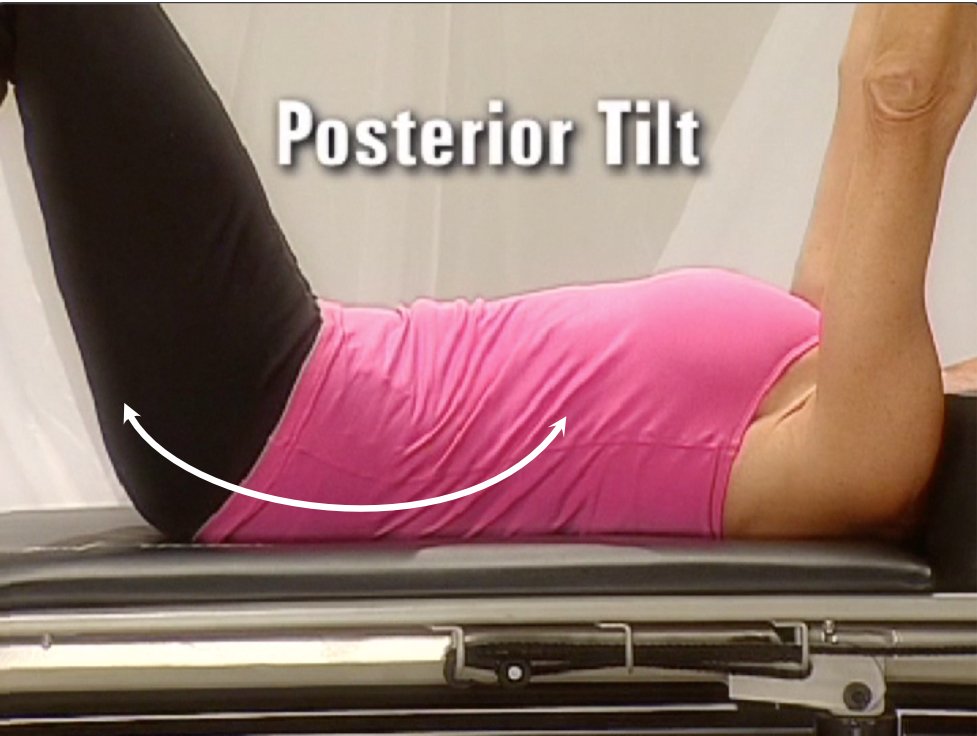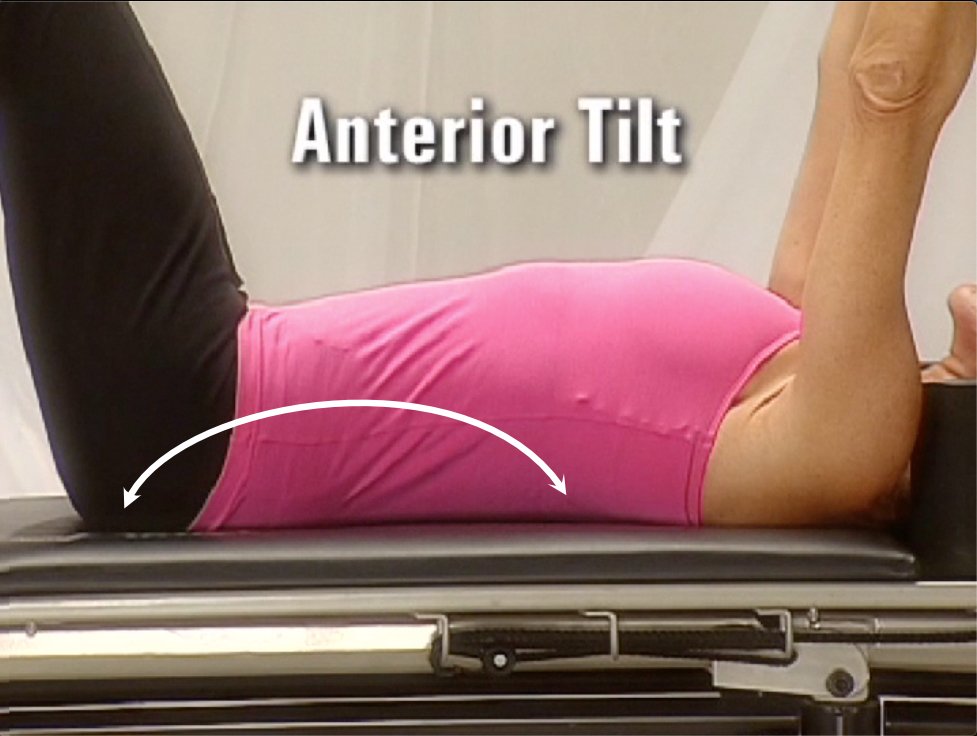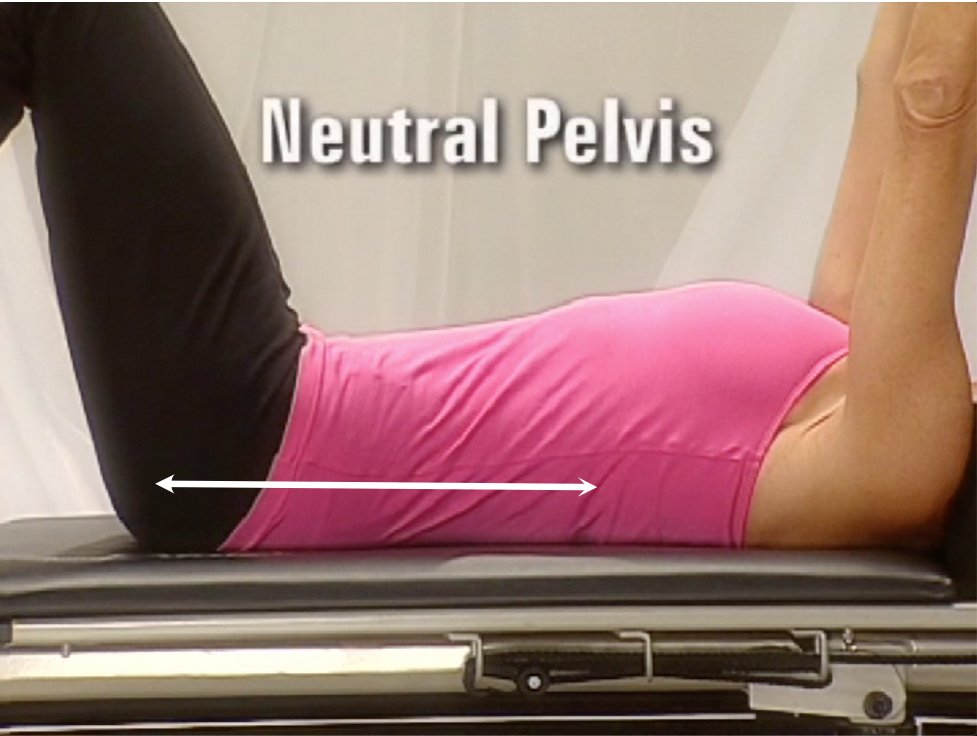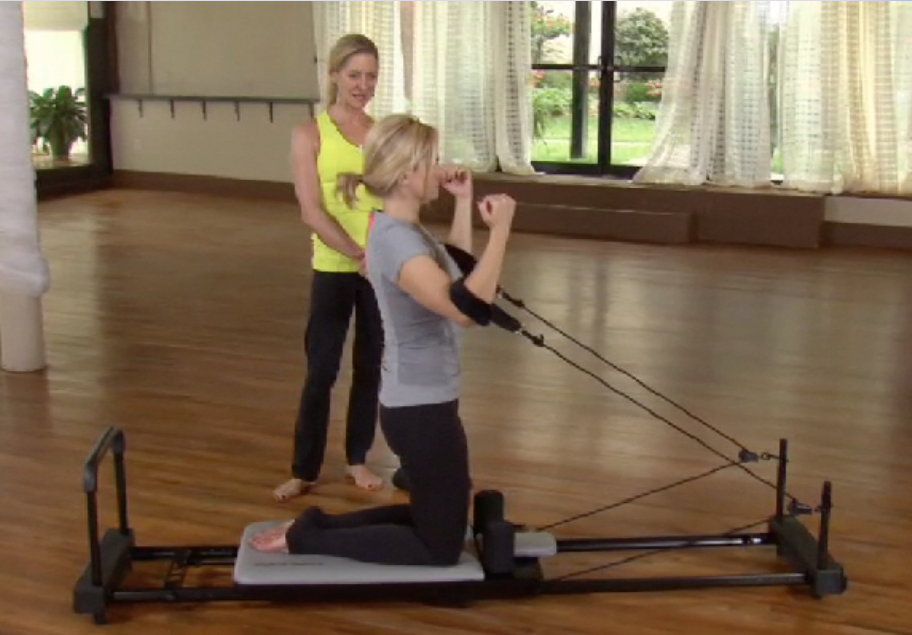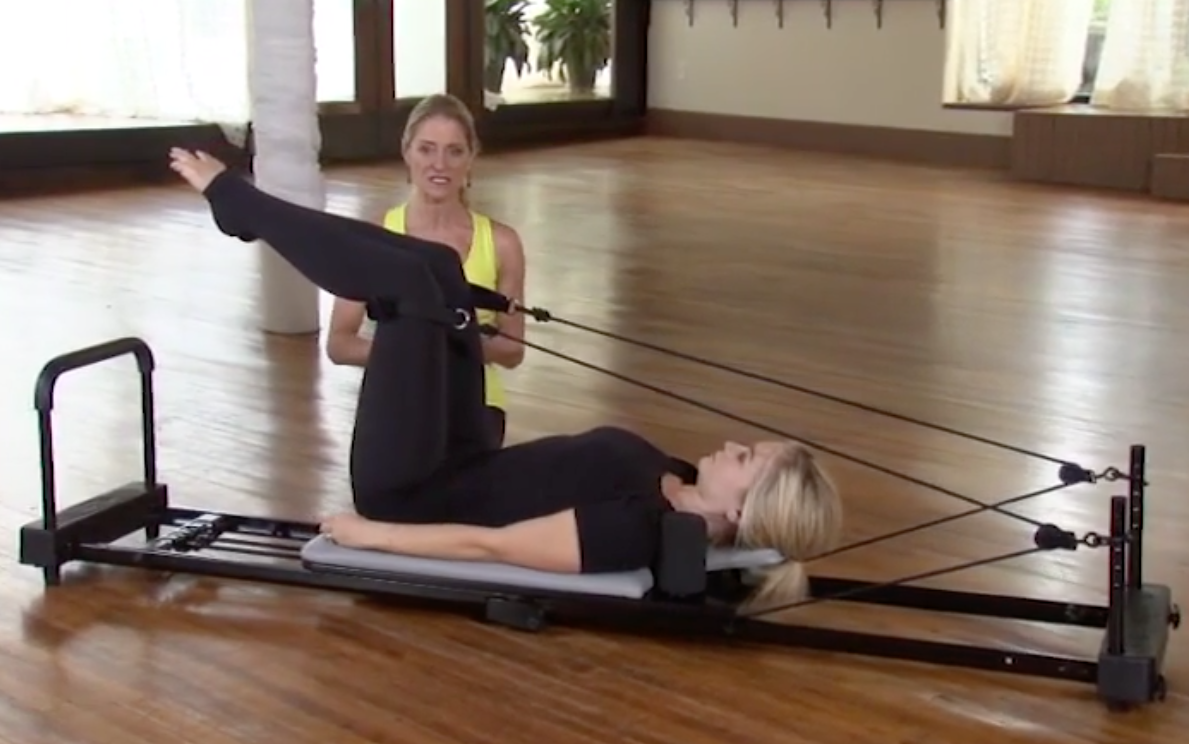10 Common Misconceptions in Reforming your Body.
Over the years exercise physiology has changed as we learn more about how the body moves and the correct muscles to employ.
Some of the rules that I learned when I trained with Romana have evolved and here is my explanation of why.
1. Imprinting or flattening your Spine versus maintaining Neutral Spine
When you move through life it is important to have good posture which maintains the natural "S" curves of your spine. These include a concave cervical or neck curve, a convex thoracic or upper back curve, a concave lumbar or lower back curve and a naturally convex coccyx.
In Pilates we teach that you should aim for a neutral spine throughout most movements. This is because when we are lying on the reformer we are still trying to simulate normal day to day standing movements.
To understand your neutral spine position; lie on the floor with your feet flat and your knees bent, inhale and exaggerate a pelvic tilt by tucking your coccyx under and up, now roll your pelvis down by arching your back into an exaggerated pelvic arch. Half way in between these exaggerated positions is your neutral spine.
When performing AeroPilates movements you always want to aim for a neutral spine.
When you first begin your reformer practice it is likely that your abdominal muscles that support your spine are weak so you will feel the need to imprint your lower back by flattening the lumbar curve and having your back connect with the platform. This is normal and intuitive but as your front muscles strengthen it is essential that you begin to aim for neutral.
As an example let’s look at the Warm-up Footwork.
When lying down on the platform feel a small space between your lumbar spine and then platform. Try to maintain it using your abdominal muscles, as you push away from the footbar and straighten your legs.
Whenever you lift your legs in the air into the chair position or at 45 degrees as in the legs in straps, Lying arms in unstraps and hundred, aim to keep the spine neutral even when the natural tendency is for the spine to imprint.
When your legs are raised and in the straps as in Leg Lowers it is still important that you work to maintain a neutral spine. Imagine pushing your tailbone down and away deeply connecting it to the platfom.
If you find that there is a strain on your back then it is always more important to stabilize the pelvis and imprint than to neutralize the spine. Maintaining a neutral spine will become less challenging as you become stronger in the abdominals, even when your legs are moving and in the air.
2. The Cervical Nod or lifting of the Head
When asked to raise your head off the neck rest it is important to do so carefully. Your head always remains a natural extension of your spine so you must not arch it or tilt it forward. As you lift your head gently nod forward drawing the chin down slightly but without creating wrinkles in the skin of the neck. When lifting the torso the aim is to lift the shoulders until the tips of your scapulas or backs of your shoulder blades are touching the platform. Obviously if you have neck issues or osteoporosis it is fine to keep your head down. You will find that the Head and Neck support pillow will add comfort to your workout.
3. More Cords versus Less
Typically we are taught that more resistance makes it harder to perform an exercise but in Pilates this is not necessarily so. The cords provide resistance to the movement of the platform away from the foot bar, usually achieved by pulling on the straps with the feet and hands or pushing away from the foot bar with the feet or hands. The muscles used for this task are our large mobilizing ones.
Dragging the platform home involves the engagement of the abdominal muscles or the adductors of the legs and arms. These muscles are smaller and referred to as our stabilizing muscles.
In Pilates we focus on initiating every movement by engaging the stabilizing muscles before we begin to put weight on the mobilizing muscles of the arms and legs. Consequently, as we become proficient at Pilates we tend to reduce the number of resistance cords as we get stronger, thereby often making the movement more difficult.
If we look at The Elephant exercise, you will see that you use your arms to stabilize your upper body. The lower body moves by pushing the platform back using the back of the heels and the hamstrings. More cords makes this movement harder. Dragging the platform back towards the foot bar requires the use of the lower pelvic floor and abdominal stabilizing muscles which is made more difficult by using fewer cords.
I recommend that before you progress from Level 1 to 2 or Basic to Intermediate, that you attempt each exercise with one more and one less cord so that you truly understand this concept of " less cords is actually more work".
4. When to Breathe
Joe Pilates believed in inhaling at the beginning of each movement to draw in oxygen and exhaling at the end to expel all the stale air out of the lungs thus leaving the body feeling more invigorated. The easiest way to understand this is by exhaling where you feel the most exertion and require the most stabilization.
This method protects your back and I recommend that you try Joe Pilates method of breathing. Inhale as you open and expand or extend your body and exhale as you close, contract or flex your body. However, if you need more support, for example in the Warmup on heavy resistance, then begin by breathing out when the exertion is the greatest.
5. Don’t give Up
Because my machine is designed to be used at home without the supervision of a trainer there are times when a new user may feel afraid to try an exercise that looks intimidating or uncomfortable. Firstly, I want to reassure you that all the exercises are safe and that the instruction is geared to you being on your own. Secondly, you should always take sensible liberty to modify any exercise as you intuitively see fit. Here is a list of common modifications:
When your legs are at 45 degrees and you cannot hold them there without feeling a strain on your lower back you may lift them up to 90 degrees or bend your knees and bring them into the chair position or into the chest (as in The Hundred).
When you are unable to sit cross legged because of knees that won’t bend, straighten both legs out in front of you. Be aware however that this will make the exercise a little more difficult so you may need to reduce the number of cords or hinge forward slightly at the waist (as in Hug a Tree - Sittin.).
When you are unable to sit close to the end of the platform because your belly is in the way then gently slide your bottom back until you can comfortably get into position (as in Stomach Massage).
When Kneeling is too hard and you feel yourself wobbling, lower your body, closer to the machine by sitting. (As in Kneeling Chest Expansion moving to sitting)
If your knee caps don’t face the ceiling or it is hard to align them over your feet, place a small pillow in between your knees or separate your toes until the knees are aligned. (As in the Warm-Up Footwork)
If your hamstrings are too tight to sit in your sit bones without bending your legs or flexing in the lower back causing you to lose your lumbar curve, place a foam roller, a couple of yoga blocks or a rolled up towel under your bottom to lift your body off the platform (as in Arms in Straps).
If all of these modifications fail then you may omit the exercise for the time being but be sure to try it again after a few days. You will be amazed at how quickly you will master it.
6. Strap Length
The straps should extend about 2-3 inches beyond the shoulder pads and must be even. If you have extraordinarily long legs and arms or are above 6 feet tall, then add 2 inches and if you have very short arms and legs or are less than 5 feet shorten them by 2 inches.
7. Shorten the Lever
Remember that your arms and legs act like levers extending from your spine and the longer the lever the harder the load on your mobilizing muscles, so if your arms and legs seem weaker than they should you can shorten the lever by placing the straps on the elbows instead of in your hands and on your knees instead of on your feet. (As in Leg Lowers or Hug a Tree).
8. Speed
Joe Pilates always believed that every movement should be executed with a focus on the quality and not on the quantity. This approach takes immense discipline and control. It takes deep breathing and mindfulness. For example The Hundred is not frenetic the maximum benefit comes from slow and controlled movement. The Warm-up Footwork is done with slow, fully executed extension and slow, resisted contraction.
9. How many Cords
My DVDs, streaming videos and charts will recommend how many cords to use for each exercise. Don’t be fooled by adding cords to make an exercise more difficult. As I have explained, above, in #3 fewer cords are often more challenging. However the key to deciding the right resistance is twofold.
To exercise the mobilizing muscles or the major muscles of the arms and legs more cords will tone and strengthen them. When focusing on the stabilizing or abdominal muscles fewer cords will tone and flatten that area.
If you are adding cords however it is most important to maintain the stability of the body part that is not actually working before trying to tone the working muscles. For example: in the Chest Expansion, more cords will tone the triceps but if your torso wobbles back and forth as you pull on the straps then you know you are unstable with that much weight and need to reduce a cord.
10. How much, how many, what order and how often?
Pilates, unlike traditional weight training which tears muscle fibers and requires a recovery time, may be done every day. If you have time constraints you may even break up your routine to do a few minutes whenever you have time.
The most important thing to know is that the workout is designed with a very specific order in mind. Your body gets warm from The Warm-Up Footwork and The Hundred. It is then ready to stretch and strengthen using The Arms and Legs in Straps, then you are ready to stretch a bit more in The Elephant and the Knee Stretch Series continuing through the exercises until The Cooldown at the end.
While it is fine to choreograph your workout to make it fun it is important to understand that there is a rhyme and reason to why you begin lying down and progress through raising and lowering your body on the machine. I believe that the right order will enhance the benefits of your workout.
Adding cords has been explained in #9 however adding reps will build stamina and endurance. We do not however recommend more than 20 reps. since the goal is to move the muscle and joint through its full range and not to tear muscle fiber.
 written by Marjolein Brugman
written by Marjolein Brugman
Marjolein Brugman is the founder of lighterliving and Aeropilates. “lighterliving is a movement and lifestyle choice we can all make. Let’s make it simple – make one decision a day to be better and watch the small steps lead to big changes. Eat smart, stay active, and you’ll live to feel a lighter life."


